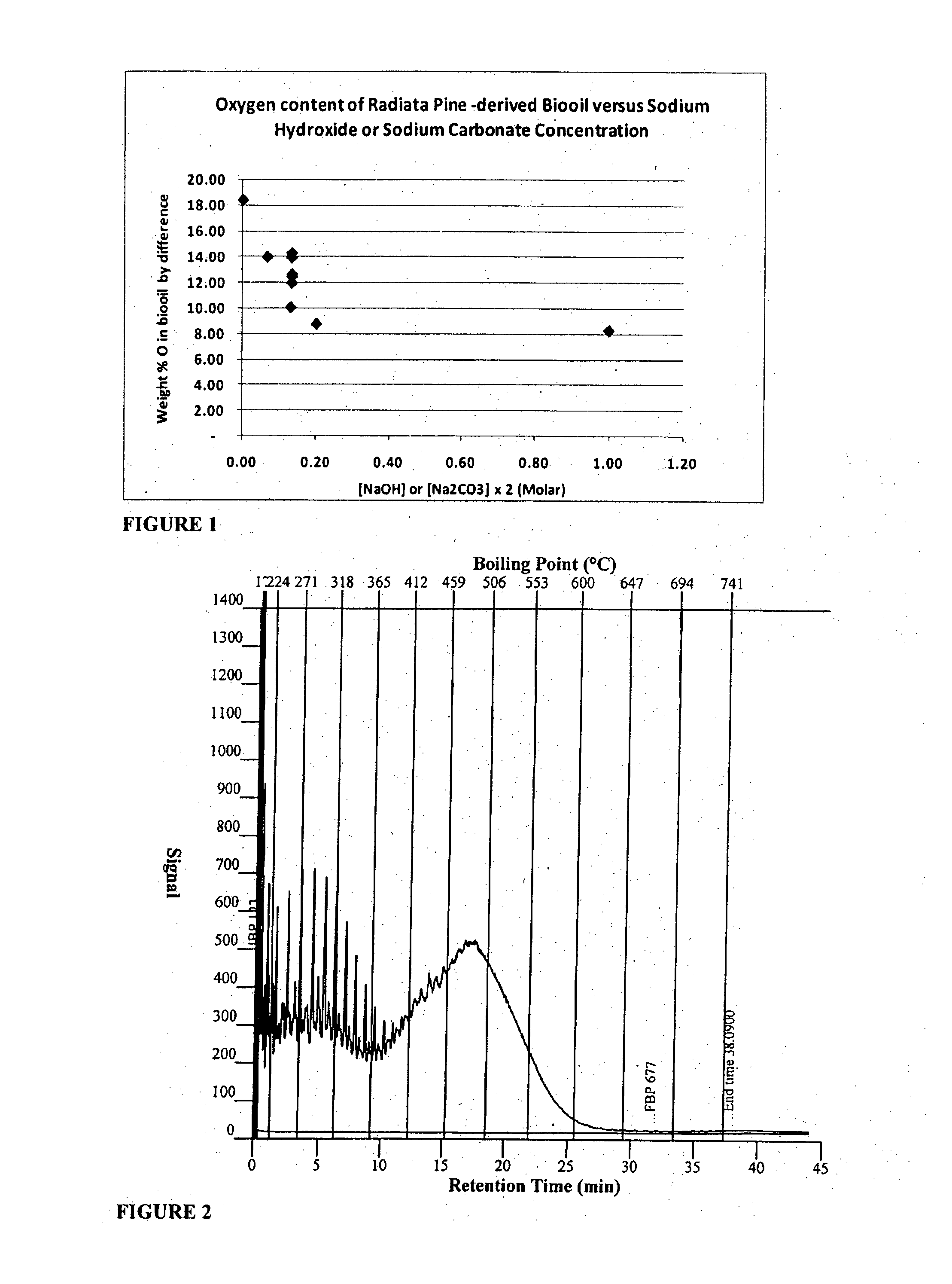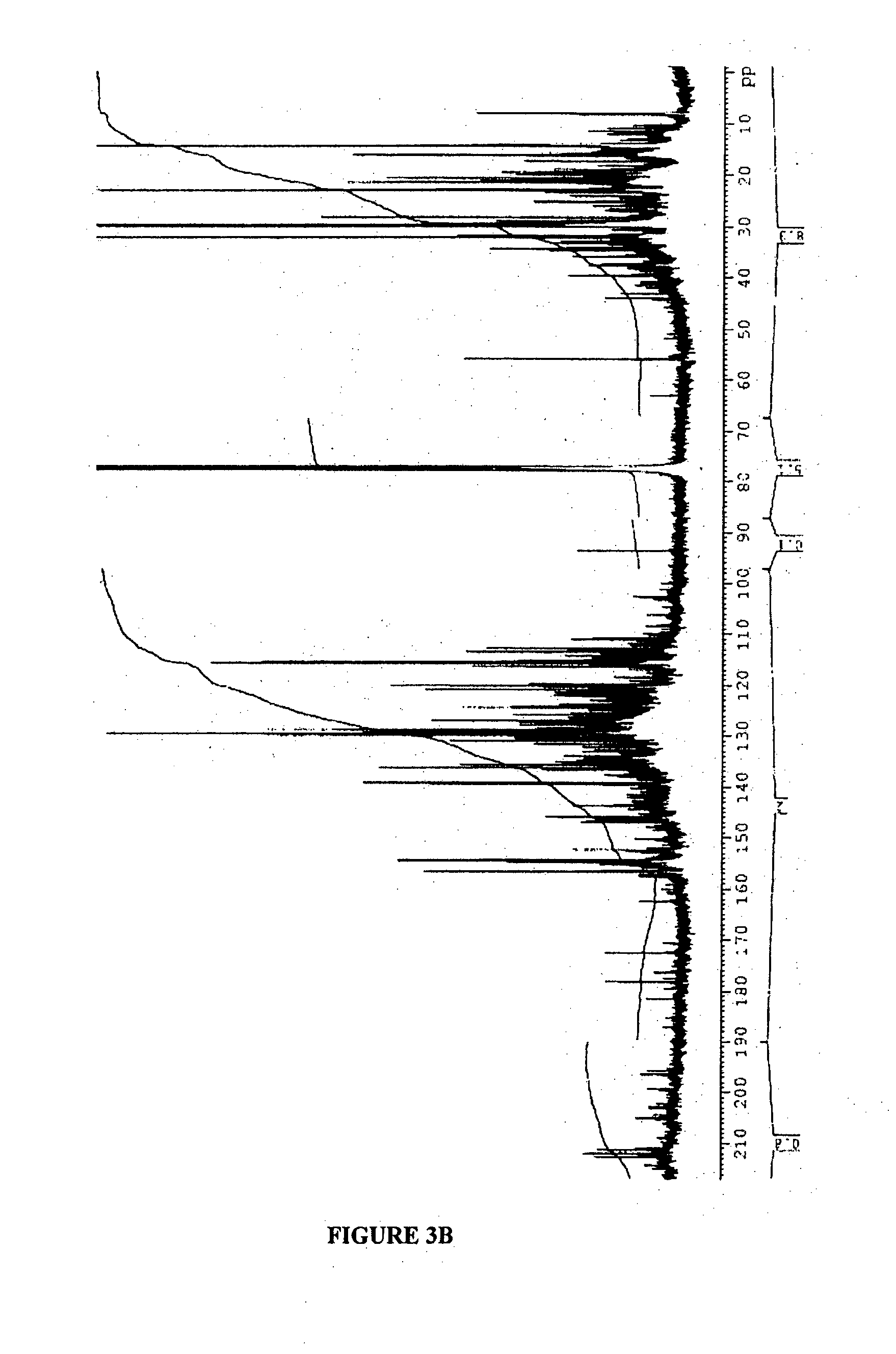Methods for Biofuel Production
a biofuel and production method technology, applied in the direction of biofeedstock, fuels, liquid carbonaceous fuels, etc., can solve the problems of poor cost efficiency of fuels produced from lignocellulosic matter or other non-conventional materials, failure to provide fuel products of adequate quality to be commercially viable, and the use of expensive hydrolytic enzymes
- Summary
- Abstract
- Description
- Claims
- Application Information
AI Technical Summary
Benefits of technology
Problems solved by technology
Method used
Image
Examples
example 1
Conversion of Organic Matter to Biofuel
(i) Apparatus
[0292]The apparatus consisted in part of a continuous flow elongated reactor assembly with high surface area, constructed of 310 stainless steel. Because of the high degree of interaction of the reacting materials with the reactor wall under continuous flow conditions, i.e. turbulent with small radius (21.4 mm inches maximum and 4.25 mm minimum) and significant length (total 84 meters), the following “intrinsic” catalysts were present in each of the different reactions described (i.e. regardless of whether “additional” catalysts were included): iron metal, hydroxides of iron, oxides of iron, carbonates of iron, hydrogen carbonates of iron, acetates of iron; nickel metal, hydroxides of nickel, oxides of nickel, carbonates of nickel, hydrogen carbonates of nickel; chromium metal, hydroxides of chromium, oxides of chromium, carbonates of chromium, hydrogen carbonates of chromium; manganese metal, hydroxides of manganese metal, oxides ...
example 2
[0303]Biofuel product analysis was performed using standard techniques as per the brief descriptions below:
[0304]Proximate analysis including percentage of moisture, ash yield, volatile matter and fixed carbon was conducted in accordance with Australian Standard Methods AS2434.1, 2 & 8.
[0305]Ultimate analysis including Carbon, Hydrogen and Nitrogen and Total Sulphur was conducted in accordance with Australian Standard Methods AS1038.6.4 and AS1038.6.3.2.
[0306]Calorific value was conducted in accordance with Australian Standard Method AS1038.5.
[0307]Analysis of ash was conducted in accordance with Australian Standard Method AS1038.14
[0308]Determination of ash fusion temperatures under an oxidising atmosphere was conducted in accordance with Australian Standard Method AS1038.15
[0309]Ultimate analysis including Carbon, Hydrogen and Nitrogen was conducted in accordance with Australian Standard Method AS1038.6.4.
[0310]Total sulphur ...
PUM
 Login to View More
Login to View More Abstract
Description
Claims
Application Information
 Login to View More
Login to View More - R&D
- Intellectual Property
- Life Sciences
- Materials
- Tech Scout
- Unparalleled Data Quality
- Higher Quality Content
- 60% Fewer Hallucinations
Browse by: Latest US Patents, China's latest patents, Technical Efficacy Thesaurus, Application Domain, Technology Topic, Popular Technical Reports.
© 2025 PatSnap. All rights reserved.Legal|Privacy policy|Modern Slavery Act Transparency Statement|Sitemap|About US| Contact US: help@patsnap.com



